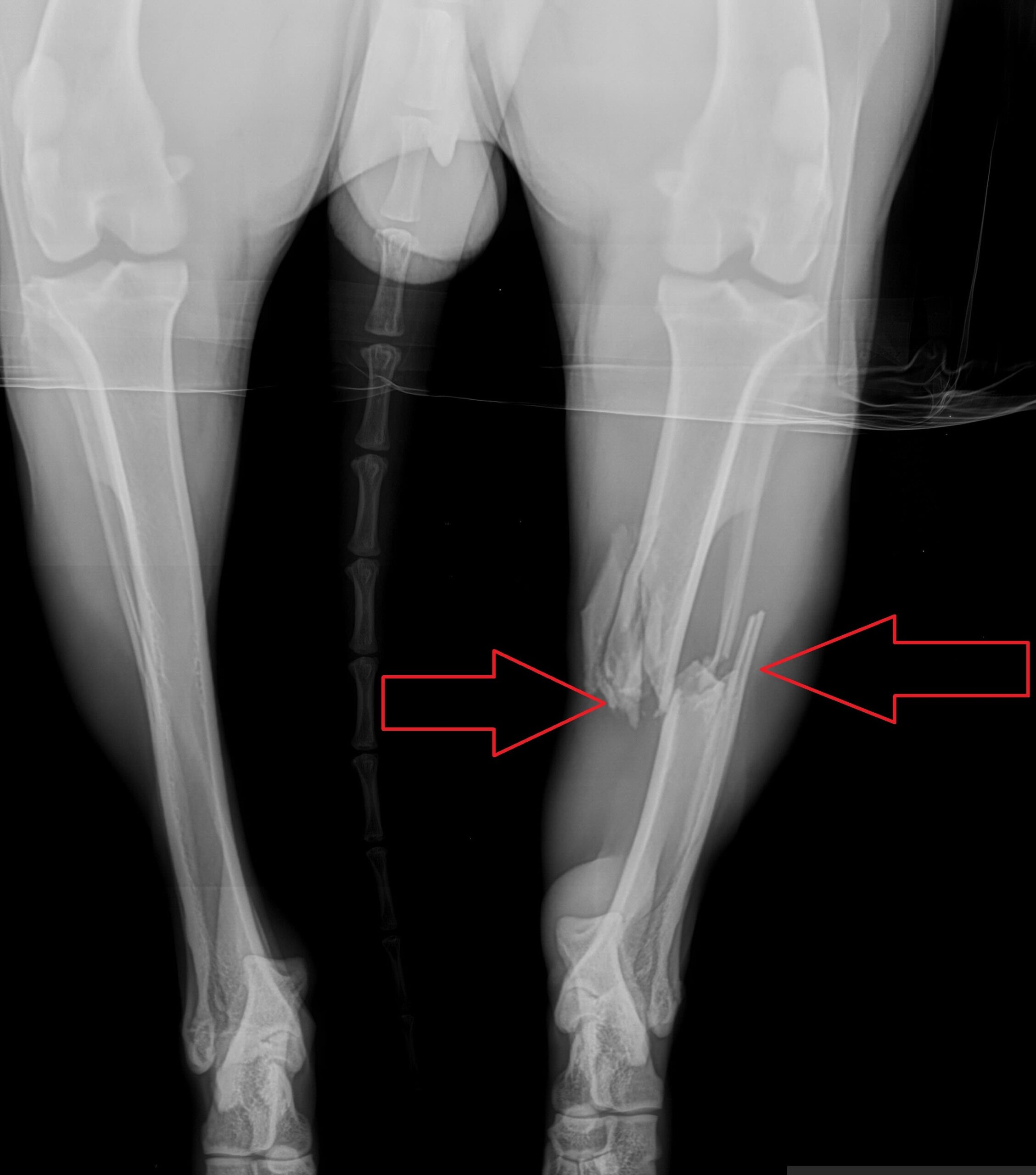At LRVSS, one of the most common questions we hear from dog owners is: “Is (s)he in pain?”
Most times, the answer is obviously “yes”, but sometimes it is more difficult to tell.
Dogs are very good at hiding their pain – an instinct from the Wild, where the sick and the weak don’t survive long.
Crying does not mean physical pain, as you can tell after locking a puppy in a room: he may scream like he is being strangled, but he is not in pain.
As a general rule, we can assume that a pet who is limping, or has a wound, or a tumor (benign or malignant), is in pain.
Pain can also result from common conditions like dental disease or arthritis, or any type of surgery. This pain should be recognized and treated.
Pain is very subjective and notoriously difficult to assess.
It depends on the individual, the breed, the age…
For example, we routinely see patients with bone fractures in daily practice.

Fracture of the shin bone
Some pets come in with obvious pain: they are moaning, panicking, biting.
However, it would not be unusual for a Labrador to come in wagging its tail despite a bone fracture!
In addition, evaluating pain is also subjective.
Different people may rate a dog’s pain differently…
So what are signs of pain in dogs?
. An unusual posture: hunched back; sitting, resting or laying abnormally
. Restlessness
. Head or tail hanging down
. Shivering or shaking
. Vocalizing: crying, screaming, whining
. Inappropriate or difficult urination or defecation
. Limping
. Difficulty getting up (often mistakenly attributed to arthritis)
. Facial expression: glazed eyes, fixed stare
. Difficulty grooming
. Lack of appetite
. Licking a wound or a surgical area – or biting at it
. Panting even though it is not hot.
Not matter what the signs are, it is important to have an open discussion with your family vet or your surgeon. Describe what you notice at home.

Never use human drugs for your pet. Not only can they be seriously harmful or deadly (e. g. naproxen i.e. Aleve in dogs), they can prevent your vet from using a whole category of drugs because of it.
Another common mistake is to use leftover drugs that your vet prescribed “last time” or for another pet.
“I had paid good money for these drugs last year” could be a dangerous thought. These drugs can have serious side-effects or could be contra-indicated in your pet’s new situation – not to mention the expiration date issue.
If the pain medications you are using are not helping, tell your vet.
You and your vet are you pet’s best advocate.
If you would like to learn how we can help your pet with safe surgery and pain management, please contact us through www.LRVSS.com
Never miss a blog by subscribing here: www.LRVSS.com/blog
Phil Zeltzman, DVM, DACVS, CVJ, Fear Free Certified
